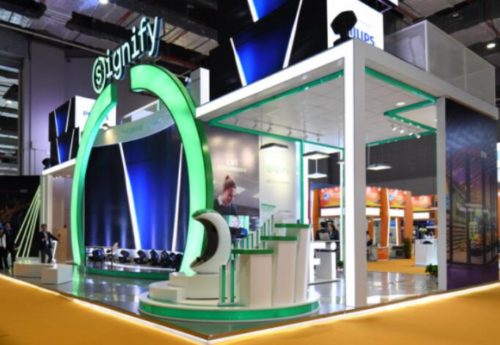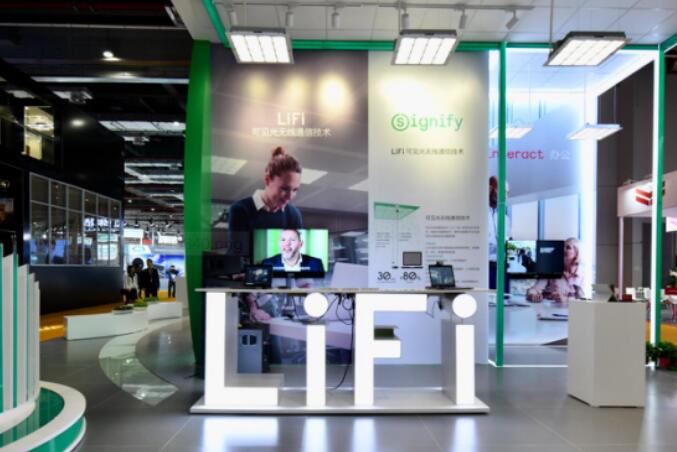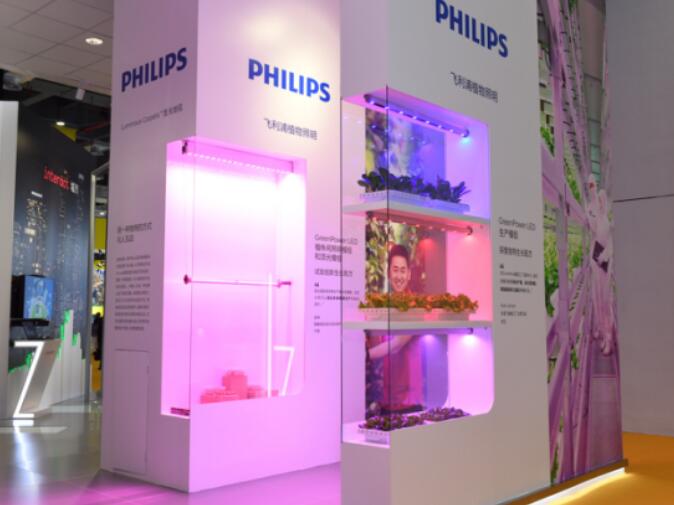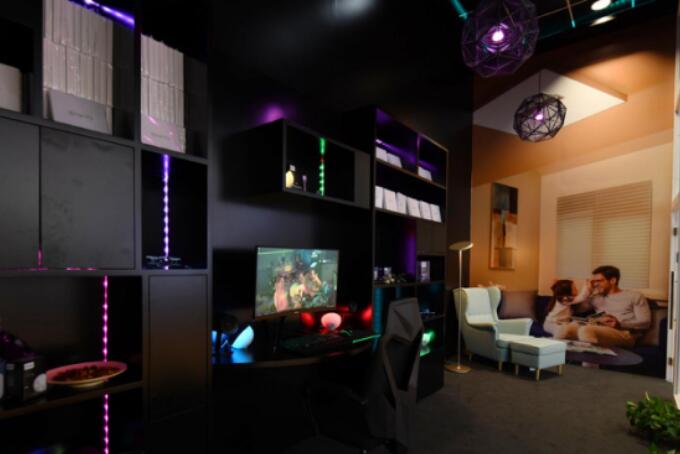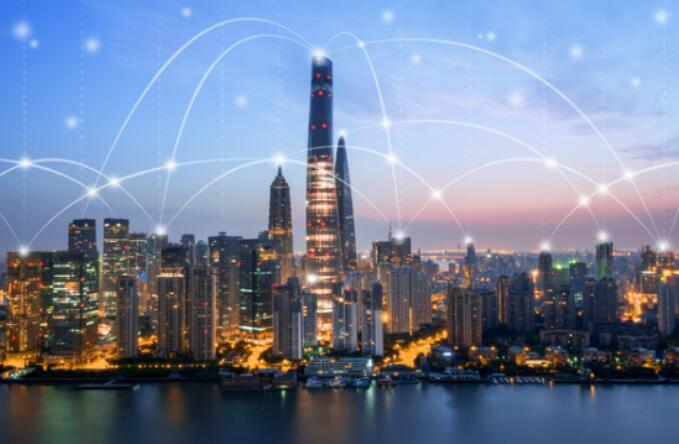At this year’s Expo, the global lighting industry leader, Signify, divided four display panels in a booth of about 200 square meters, and presented its own smart interconnection technology. These four sectors are visible light wireless communication technology (Lifi), Internet of Things lighting platform Interact, plant lighting technology in “urban farm”, and smart home lighting system “Philips show”.
From November 5th to 10th, the first China International Import Expo was held in Shanghai National Convention and Exhibition Center. More than 3,000 companies from more than 130 countries participated in the event.
At this year’s Expo, the global lighting industry leader, Signify, divided four display panels in a booth of about 200 square meters, and presented its own smart interconnection technology. These four sectors are visible light wireless communication technology (Lifi), Internet of Things lighting platform Interact, plant lighting technology in “urban farm”, and smart home lighting system “Philips show”. These exhibits include cutting-edge innovations for the future, as well as products and systems that have been introduced in the domestic market; both professional lighting applications and consumer lighting applications for the home.
The world’s first commercial visible light wireless communication technology (Lifi) solution
Nowadays, people’s work and life have been closely linked to the Internet, and even hope to connect to the Internet every moment, anytime, anywhere. However, as the number of IoT devices continues to increase, radio spectrum resources become more and more tense, and too many connected devices are likely to cause network overload. At the same time, in some specific application scenarios, the WiFi signal is relatively poor in security and cannot completely cover all areas. The emergence of LiFi just helps people get rid of these realities and make fundamental changes.
At this fair, Yannuo took the world’s first commercial visible light wireless communication technology (Lifi) solution to the scene. The program first appeared at the Frankfurt Lighting Fair in March this year, and this time the Expo was the first appearance of LiFi in China. Unlike WiFi using radio waves, LiFi uses visible light waves with higher frequency than radio waves for data transmission and reception, providing users with a stable, high-speed broadband data connection.
The Lifi technology is very simple to use. The Ethernet cable is plugged into a Lifium-enabled luminaire, and the luminaire is immediately a wireless router. The built-in modem pair makes fine-tuning of the frequency of the light in a range that is unobservable to the naked eye, providing a powerful network connection and sending downstream data. You only need to plug the USB LiFi wireless network card into your laptop or tablet to receive the data. The USB LiFi wireless network card uploads the signal to the fixture through the infrared.
LiFi technology uses light waves to spread data and information, with ultra-fast transmission speeds of up to 30M/s. At such a high rate, even if two high-definition movies are simultaneously opened, the video call can be smoothly performed. In addition, because the light source is ubiquitous, LiFi technology can also be applied in places where security units or WiFi cannot cover. It can even be said that LiFi technology can be applied as long as there is light and light. In places where banks need to be kept secret, the occlusion of light waves creates natural network isolation, which makes hackers lose the opportunity to intervene.
At present, most of Zenofei’s lighting products have been able to support LiFi technology, including Philips PowerBalance gen2 and Philips LuxSpace downlights. Among them, Philips PowerBalance gen2 is an ideal choice for offices and schools due to its wide range of applications, while Philips LuxSpace downlights are suitable for areas with high security requirements, including hospitals.
The new Interact IoT platform
On the road of the development of intelligent lighting for the Internet of Things, Yannuofei has always played the role of “leading pioneer”. As the name of the company changes, as the global lighting industry leader, the positioning of Yannuofei has also turned into a lighting company in the Internet of Things era. At this year’s Frankfurt exhibition, Yannuo announced that by 2020, Zeno will provide products with interconnect options on a global scale, including light source and lighting products, leading the global lighting industry to intelligent lighting for the Internet of Things. Direction development.
At this fair, Yannuo focused on its new Interact IoT platform. This is a secure, scalable IoT platform that collects useful information from interconnected LED lighting, embedded sensors and IoT devices through an interconnected lighting system that can be bi-directionally connected to the Internet of Things. The open API allows the lighting software and system architecture to repeatedly share data between LED light locations, sensors and Interact IoT platforms.
Whether it’s everyday homes, offices, or streets, smart lighting has become widely used in a variety of industries, and their flexible interactivity and real-time monitoring become more important. In the past, traditional street lights required regular maintenance. Now, a street light is a node. Through the Interact platform, it can clearly detect which light is broken, and the management and maintenance efficiency based on the background is greatly improved. In addition, through communication acquisition and other technologies, it is also possible to monitor the flow of people on the road and air quality. The sensors in the street lamps can also scan roads and sidewalks, provide standardized scene information for autonomous vehicles, and assist vehicle sensors to improve driving safety.
On November 7, Yannuo launched the new intelligent interconnection system Interact Pro, the first intelligent system and software designed for small and medium-sized enterprises that can be multitasking. Designed for small to medium office spaces, Interact Pro connects and manages up to 200 control points from 1,000 to 10,000 square meters. Using the Interact Pro intelligent system based on cloud technology, enterprises can control indoor lighting through various methods such as web-side management software, gateways, and mobile APP.
Future-oriented “urban farm” plant lighting technology
In addition, Yanuofei also demonstrated plant lighting technology that simulates specific spectra and helps plants grow more naturally. At present, this technology has been widely used in the Netherlands, France, Russia and other countries to create a “urban farm”.
“Urban Farm” is an advanced stage of modern agricultural development and represents the future direction of agriculture. With the continuous growth of the global population and the continuous advancement of urbanization, the importance of “urban farms” is also growing. In the construction of “urban farms”, plant lighting technology is the most critical part. With the continuous development of blue LED technology, and the introduction of related intelligent control technology, Internet of Things technology and sensing technology, the energy consumption of artificial light sources can be greatly reduced, and intelligent plant lighting factories are beginning to rise. Philips LED plant lighting studies the impact of LED lighting on a variety of crops and actively explores the most suitable “light formula” for crop growth.Signify “Light formula” refers to the light conditions required for a certain growth stage of a crop under certain growth conditions, which can be applied to various aspects of plant growth, such as greenhouse vegetable and fruit production, flower production. , plant factories, etc.
Yanuofei and Russian fresh vegetable company Agro-Inwest launched the world’s largest LED gardening lighting in 2017. This year, Agro-Inwest expanded the use of Philips LED lighting in tomato cultivation, expanding from the original 25 hectares to 68.5 hectares, creating a greenhouse plantation equivalent to 100 football fields.
At present, the three major markets for LED plant lighting are plant factories, plant landscapes, and breeding lighting. With the development of technology and market, its popularity will continue to increase.
Philips Show: Smart home lighting
With more than 16 million colors, the “Philips Show” brings more colors to the family’s smart lighting, and it attracts countless visitors at the Expo. “Philips Show” is a sub-brand created by Zenofei in the field of smart home lighting. It is also the leading brand of smart home lighting in the world, representing the comprehensive innovation of Zenofei’s application of home lighting. Modern smart home lighting has a clear demarcation from traditional single-function home lighting. This is a kind of lighting that pays more attention to health appeal, interaction and more humanity.
The intelligent lighting system in the home not only acts as a simple function to brighten the room, it can also become an intimate communication object, and a dialogue with light can be realized by means of various digital interactive forms. For example, the linkage of smart speakers and table lamps, virtual reality immersion experience, precise atmosphere creation, more flexible and personalized lighting solutions, etc., all make home time more beautiful.
On October 12th, Yannuofei officially announced that its “Philips Show” personalized intelligent lighting system and China’s whole house smart home system research and development and manufacturer UIOT Ziguang IOT have strategic cooperation, more than 170 UIOT purple light material associations across the country The high-end smart home experience store provides consumers and designers with one-stop smart home lighting scene experience and full house intelligent system docking service. At present, “Philips Show” has realized the technology connection with more than 700 third-party applications, covering wearable devices, Internet services and smart home products.
Renamed Signify is a response to the Internet of Things era
On May 16th, 2018, it was the first “International Light Day” established by UNESCO. It was also the first day when Philips Lighting officially changed the company name to “Zhennuofei”. On the same day, Yannuo launched a new Greater China headquarters building built with smart connected lighting technology.
The new building of the Greater China headquarters is the best example of IoT lighting. The Internet of Things connects all things, and uses human lighting as a starting point to integrate street lighting, architecture, interior, energy consumption and other management. It shows people how intelligently connected lighting can help all kinds of spaces realize green, healthy and lean. The goal.
Behind the name change is a new interpretation of the new brand of Signify: Light has become an intelligent language that connects and transmits information. It clearly articulates the company’s vision and goals: to unlock the extraordinary potential of lighting and create a “shining life, a beautiful world”. The Chinese name gives a richer meaning, reflecting the company with more than 127 years of history, such as the rising sun, the long-lasting, and always adhering to the innovative concept, adhere to the commitment to the Chinese market, and achieve rapid development in the Internet of Things era.
Looking back on the development process of 127 years, Signify continues to renew its vitality, and the sinister flight that leads the era of IoT lighting once again gives us a broader imagination.


